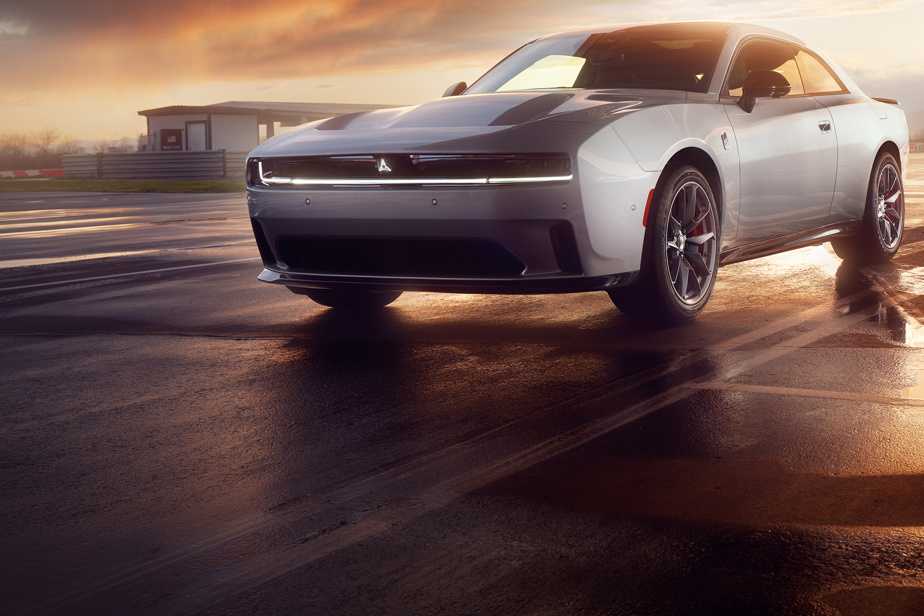The Dodge Charger was born in 1966 with the aim of democratizing power. With its optional 7 L (426 cu. in.) Hemi V8 producing 425 hp, the brute draped in a body with sinister and intimidating features captured the imagination so much that it became the protagonist of many films and television series. Well aware of the historical importance of the model, Dodge chose to reissue it a few months after the abandonment of the previous generation. Electricity is on the menu, as is thermal as well as two- and four-door bodies.
It is therefore an excessively varied menu to which the American brand invites us, perhaps a sign of a more complex and pivotal automotive era. Thus, the buyer will have, from the middle of the year, the choice between electric versions of this new Charger as well as two 3.0L twin-turbo inline six-cylinders. Add to that bodies with neo-retro coupe accents in the aim of filling the space left vacant by the abandonment of the Challenger as well as the sedan. All Chargers feature a rear hatch for added versatility.
Electricity and six cylinders to replace V8s

PHOTO PROVIDED BY STELLANTIS
The 2024 Dodge Charger Daytona Scat Pack
Two electrified versions based on the new Stellantis STLA electric platform will enter the range of muscle car with this new generation. Named Daytona, after the famous Florida circuit, they have one motor per axle to ensure traction. The R/T livery offers 496 hp while the Scat Pack version puts forward 670 hp to stand out. The latter completes 0-100 km/h in 3.3 s and the quarter mile (0-402 m) – a standard measurement dear to the Americans – in 11.2 s according to Stellantis estimates. That’s about 0.6 sec slower than the outgoing Charger Hellcat Redeye. However, we can bet that more efficient liveries are already in preparation.

PHOTO PROVIDED BY STELLANTIS
The 2024 Dodge Charger Daytona R/T in sedan version
To ensure energy storage, the Charger Daytonas use a 100.5 kWh nickel-cobalt-aluminum block powered by a 400 V electrical architecture. The estimated range is 510 km for the R/T version, while the more powerful Scat Pack variant can travel significantly less (418 km). Note that both versions will have a maximum charging power of 350 kW, which reduces the waiting time to 27 minutes to go from 20 to 80% charge, if you connect to one of the few compatible terminals.

PHOTO PROVIDED BY STELLANTIS
The Dodge Charger SIXPACK HO powered by a 3.0L twin-turbo six-cylinder generating 550 hp.
This Charger will also be offered with a bouquet of six-cylinder in-line engines to expand the offering. These biturbo engines from the Hurricane family which replace the V8s at Stellantis will produce 420 hp or 550 hp depending on the version. The manufacturer was stingy with details on these versions, which should logically use an eight-speed ZF automatic transmission.
An almost perfect mass ratio

PHOTO PROVIDED BY STELLANTIS
The interior of the Dodge Charger Daytona Scat Pack
Thanks to the positioning of its motors and its high-voltage battery, the Charger Daytona benefits from almost perfect weight distribution between the front and rear. An unprecedented feat for a muscle car. The platform also employs front and rear multi-link suspensions with dual-valve adaptive shock absorbers to control the compression and rebound phases. Huge optional 305mm wide front and 325mm wide rear skids provide grip for the Scat Pack livery.
Production of the Charger Daytona Coupe will begin mid-year. For the other liveries, Stellantis plans to start their assembly at the beginning of 2025.
